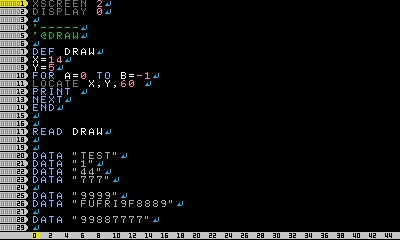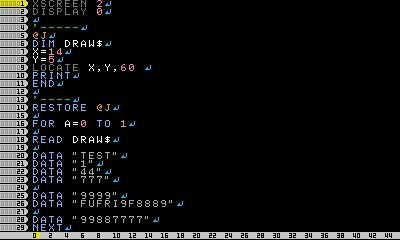I know I'm annoying everyone, but I'm literally trying my best to understand as the guides for programming is limited compare to other countries, and I do not want to go back to time where I didn't appreciate programming at all.
So I wanna see how READ RESTORE and DATA works without making it look complex to remember. I want to try and not make this really complex like $ at the end because I get..

プレイ済み






